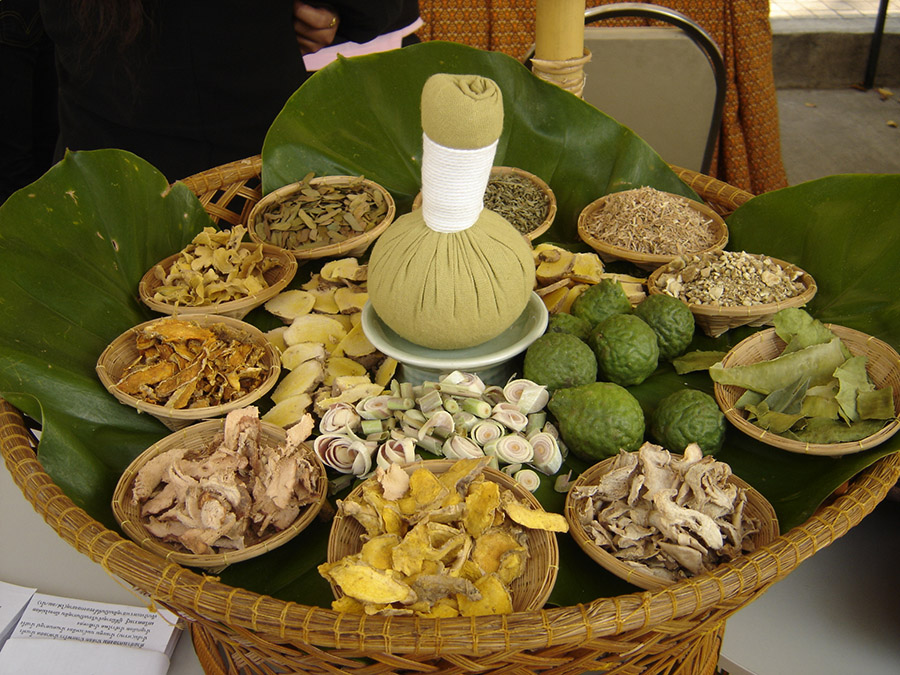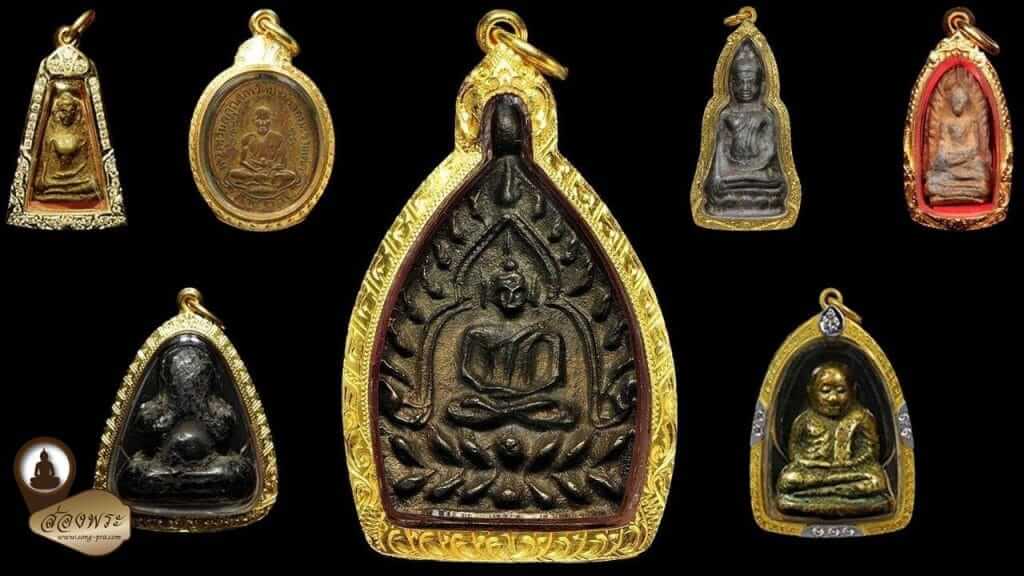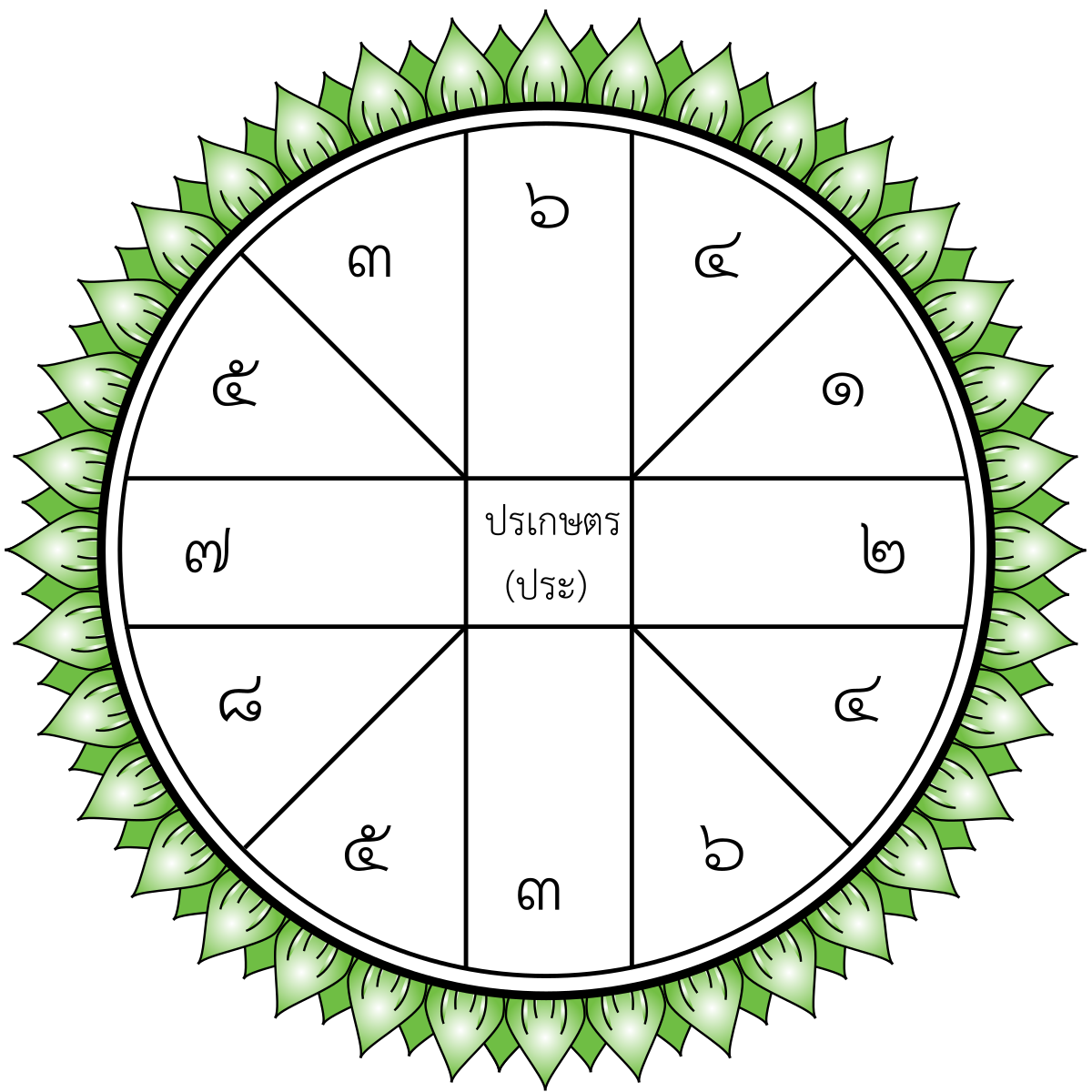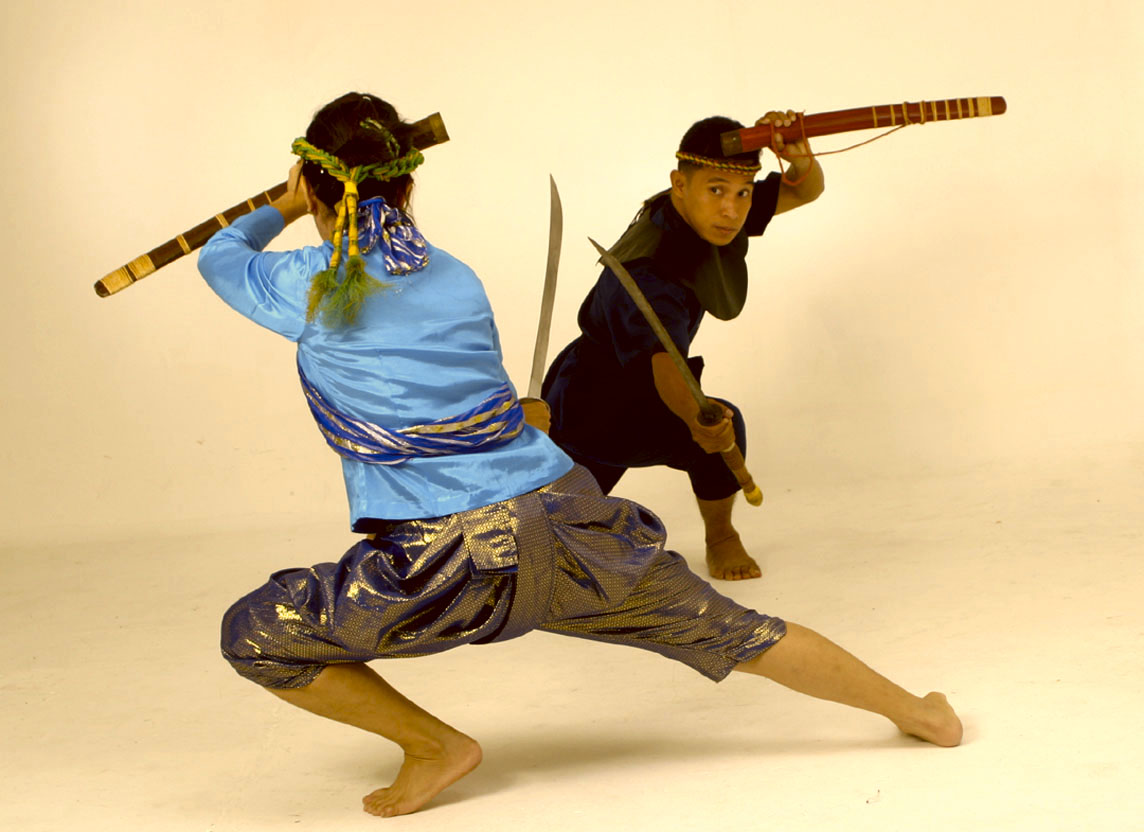The Thai way of life emphasizes respect for the land and fellow beings. It is through this value of respect that Thai people first gained valuable insights into the forces that control human lives. As these insights are passed down through generations, they accumulate into comprehensive knowledge and practices concerning nature and the universe. These knowledge and practices are what make up the bodies of Thai local wisdoms.
On the basic level, local wisdoms act as means for survival. This is evident in disciplines such as hunting and agricultural knowledge. On a higher note, however, local wisdoms can also act as ways for individuals to demonstrate compassion towards one another. This is most evident in the countless caretakers of different wisdom heritage. These caretakers are often respected members of society who use their expertise to help others. Examples may include traditional healers who utilize herbs to cure the ailments or tattoo masters who utilize sacred symbols improve the luck of devotees.
Due to the open-minded nature of the Thai people, Thai local wisdoms continues to grow through the incorporation of imported knowledge and innovations with traditional heritage. This process can be seen most prominently in the practice of wai khru [ไหว้ครู] – rituals of offering reverence towards one’s teachers. During the wai khru ceremony, elements of Buddhism and Hinduism, two religions that originated in India, blends seamlessly with local animistic beliefs. In more recent times, Thai local wisdoms have adapted to the changes brought on by globalism. Many knowledge and practices have also garnered attention from the international community, with examples including Thai traditional massage and yantra tattooing.

(cr. Manager Online)
Thai Traditional Medicine
Thai traditional medicine [แพทย์แผนไทย] is a system of health practices based on the promotion of physical and spiritual harmony through means of medicine, bodily manipulation, and spiritual wellbeing. Traditional Thai healers devote their lives to helping others recover from ailments without seeking personal gains. This act of selflessness stems from the Buddhist value of compassion. Ethics in the field are preserved through strict codes of conducts designed by predeceasing teachers.
Central to the knowledge of Thai Traditional Medicine is the theory the four elements: forces that governs the human body. These elements are earth (din), water (nam), air (lom), and fire (fai). Illnesses arise when the elements are in disharmony. To reestablish and maintain balance, healers must draw on a wide variety of skills, namely:
- Medicine –the knowledge and use of the medicinal plants, animals, and other natural substances.
- Bodily manipulation –various hands-on techniques that are used to manipulate the human body into desired states. Examples of bodily manipulation include Thai traditional massage, bone setting, and midwifery.
- Spiritual wellbeing – the practice of tending to mental and emotional health in conjunction with physical health. Thai traditional healers believe that a healthy mind is crucial for a healthy body. Many techniques are employed to ease the patient’s mental stress, including spiritual practices such as soo khwan or calling of the soul.
Nuad Thai
Nuad Thai [นวดไทย] or Thai traditional massage, is a form of Thai traditional medicine which utilizes the techniques of pressure points, kneading, pulling, stretching, and application of hot and cold medicine. The central theory of nuad Thai is the theory of ten energy lines (sen prathan sip) which explains how human life energy is distributed through ten major wind channels. The channels radiate from the navel and travel along fixed path throughout the body. Ailments are caused by the malfunctioning of the wind channels, and thus, can be cured through the manipulation of certain pressure points along the channels.
The legendary founder of nuad Thai is Jīvaka Komārabhacca, the historic physician of Lord Buddha. Depictions of massage in art can be found dating back as far as the Dvaravati period (6th– 11th century). During the Ayutthaya period (1350-1767 AD), French diplomat Simon de la Loubère recorded that massage was a well-known form of medicine among the Siamese (Thais). A center for nuad Thai studies was established by King Nangklao (Rama III) of the Rattanakosin era at Wat Pho, commonly known in the West as the Temple of the Reclining Buddha. The King ordered for knowledge concerning massage and other forms of traditional medicine to be gathered and recorded along temple walls. A series of statues was also commissioned, depicting hermits in various postures of stretching.
Nuad Thai was included in the UNESCO Intangible Cultural Heritage Lists in 2019.
Traditional Medicine in Modern Times
Today, nuad Thai has emerged as a core service in Thailand’s spa and health industry, which has expanded alongside Thailand’s booming tourism industry. Nuad Thai’s popularity has spread to all corners of the globe. Foreign enthusiasts often travel to Thailand to learn traditional massaging discipline, with Wat Pho functioning as a major center of education.

(cr. song-pra.com)
Magical Practices
In the age when the world was not yet understood through the lenses of science, people resort to spirituality and the supernatural to navigate the ups and downs of life. This resulted in the development of magic: ritualistic and symbolic practices believed to affect natural and supernatural forces. Thai magical practices, in particular, was influenced from three main sources of spirituality. The first is animism, which assign meanings and powers to individuals, objects, animals, and natural surroundings. The second is Brahmanism-Hinduism, which provides the basis of rituals and systematic occult studies. The third is Buddhism, which lays out the rules of karma, good conduct, and compassion.
There are countless forms of Thai magical practices. The most well-known examples include yantra tattooing and magical amulets. These practices are passed down from masters to students. Those who carry knowledge of the occult must respect their teachers and follow rules laid out by predeceasing masters. They must also generally perform good deeds to increase their spiritual powers and refrain from using their knowledge to harm others.
Yantra Tattooing
Yantras [ยันต์] are sacred geometric designs originating from Indian religious traditions. They are believed to special power, which each yantra associated to a particular deity or spiritual forces. The art yantra came to Southeast Asia through the spread of Brahmanism-Hinduism and Buddhism. Thai yantras are usually geometric or artistic designs accompanied with sacred texts, numbers, and symbols. Each geometric shape represents different things. For example, round yantras are said to represent the face of Lord Buddha or the God Brahma. The lines that make up the main geometric design of the yantra is said to represent the umbilical cord of the Lord Buddha.
There are countless varieties of Thai yantras. Each yantra is believed to perform a specific function accorded to it by the runes and symbols it is drawn from. The functions of yantras can be divided into five main categories, including: 1) protection 2) charm 3) wealth 4) overall luck and auspiciousness and 5) specific functions as designated by the inventor of said yantra.
Yantras are inscribed onto objects and places. People may also carry pieces of cloth or talismans inscribed with yantras. Eventually, yantra tattooing was invented as a mean for individuals to possess the sacred power of the yantra in their physical form. The tattooing is done be masters who must be initiated by occult masters. The giver and carrier of tattoos must follow codes of conducts laid out by previous masters. These codes are aimed at keeping the individual as good members of society. For example, carriers of certain yantras may be prohibited from committing adultery or disrespecting one’s parents and teachers. Failure to follow said codes of conducts are believed to result in dire consequences.
Today yantra tattoos are not only renowned for their spiritual powers, but are also internationally appreciated for its beautiful aesthetics.
Magical Amulets
Much like yantras, each Thai amulet is believed to carry specific spiritual power. Thai amulets originated from the animistic belief that certain objects, such as rare plants and minerals, can carry supernatural power. The amulets can be divided into two main categories: 1) phra khrueng [พระเครื่อง] and 2) khureng rang khong khlang [เครื่องรางของขลัง]. Phra khrueng or Buddha amulets are amulets in the shape of Lord Buddha, Buddhist monks, or deities. The most famous of these are the Benja Phakee: a collection of five amulets said to be the rarest and most expensive of all Thai amulets. Khrueng rang khong khlang, on the other hand, refers to all types of talismanic objects, not just those based on Buddhist figures. These can include a variety of items ranging from special gemstones and animal parts to phallic object and items believed to house the spirits of deceased individuals.
One question remains: what distinguishes an ordinary object from objects with special powers? The answer lies in three levels. First, certain objects are believed to carry inherent supernatural powers. These are often naturally occurring or man-made objects that may be rare or possess special qualities. Examples include certain gemstones, a cat’s eye that has solidified post mortem, elephant’s placenta, tiger’s fang, and the torn skin of a temple drum, among others.
Second, certain objects must go through special rituals to ensign them with spiritual powers. A piece of cloth, for example, can be inscribed with yantra and blessed in order to make it become a protective charm. Coffin nails can be melted into knives and blessed in order to make it a weapon against evil spirits. Lastly, amulets can be made by combing different “ingredients”. The best example is phra khrueng, which are often sculpted from clay. The clay, by itself, has no special powers. Thus, amulet makers must mix sacred herbs and objects with supernatural powers into the clay mixture. They then sculpt the mixture into the shape of sacred figures (Lord Buddha, famous monks, deities, etc) in order to invoke said figures’ powers. Some amulet maker may even inscribe yantras onto the amulet to add more spiritual powers. Lastly, the phra khrueng is blessed as a way to “activate” all special powers contained within.
The knowledge to how to identify and make amulets is usually passed down from master to student. Those who carry this sacred knowledge must conduct themselves according the rules laid out by previous masters, otherwise they will not have the power to consecrate the amulets. Like other disciplines of Thai local wisdoms, the codes of conducts of amulet masters usually prohibit them from committing wrongdoings and using their art for evil purposes. Similarly, those who carry amulets are encouraged to perform good deeds, which are believed to increase their amulets’ powers. Performing bad deeds, on the other hand, can lead to a decrease or even total depletion of the amulets’ powers.

Astrology and Divination
The future is one of life’s greatest mysteries. Astrology and divination is born out of human’s need to predict and plan for future events. Thai astrology and divination is a combination of local, Brahmanistic-Hindu, and Buddhist beliefs. Astrological knowledge began through the observation of the moon. Astrologers would track the moon’s cycle across the sky, passing through different stars’ zone. They then record occurrences and lives of people who are born under the influences each star zones. Later, when humans learn to identify different planets of the solar system, astrologers began to take note of the planets’ positions and their interaction with each other. The gathered data are eventually examined to find recurring patterns. It is with these patterns the knowledge to predicting the future through the stars is based on. Divination, similarly, was born from the observations of signs and events that follow.
Astrology and divination are often viewed as superstitions; however, both carry significant historical and cultural values to the Thai people. In the past, astrological and astronomical knowledge were not separate fields of study. Astrology, which entails the observation and record of star movements, were not only used to predict the lives of people, but also forecast weather, maintain calendrical systems, and schedule state functions. Today, Thai people seek out astrologists and diviners to gain a peace of mind when they are facing uncertainty in their lives. Often, the prophecies they receive remind them to live with mindfulness and virtues. When their luck is down, they may be advised to perform good deeds to turn their fate around. If anything, astrology and divination should be viewed as a way to encourage people to perform good deeds and live mindfully.

Martial Arts
War and conflict were inevitable parts of ancient life. The art of fighting was born out of the necessity for people to protect themselves, their family, and their community. As generations passed, through countless trials and errors, the knowledge of how to fight became comprehensive and systematic. These ranges from person-to-person combat to largescale military tactics. Martial arts refer to the knowledge to person-to-person combat. It can include hand-to-hand combat as well as the utilization of weapons. The most famous martial art of Thailand is muay Thai, which is deserving of its own cultural category. Other than that, Thailand also boasts other styles of hand-to-hand and armed fighting techniques, including krabi-krabong and jerng, among others.
The topic of martial arts may evoke a sense of violence. For the Thais, however, the art of fighting is the art of honor and respect. From its inception as a way to protect what one holds dear, Thai combat knowledge is not based on the principle of destruction, but rather the development of self. Students are selected and guided by teachers, who transform them from ordinary human beings to strong, honorable individuals capable to defending themselves, their loved ones, and their country. They are taught to be respectful of their teachers, parents, and country. The greatest fight, in the Thai way of thinking, is the fight within. Fighters must learn to control their pride and anger, refrain from using their knowledge for evil purposes, and constantly strive to improve themselves physically, mentally, and spiritually.
What to Explore!
In the “Local Wisdoms” hub, you will get to explore the knowledge and practices of the Thai people. From nuad Thai to astrology, you will not only learn about the basic information of these “wisdom” heritages, but will also get to see how they relate to the Thai values and way of life.
Sources
- Thai Culture: Ways of Life and Wisdom by the Department of Cultural Promotion, Ministry of Culture https://www.thailandfoundation.or.th/culture_heritage/culture-ways-of-life-and-wisdom-17/
- Nuad Thai: Thai Traditional Massage by the Department of Cultural Promotion, Ministry of Culture https://www.thailandfoundation.or.th/culture_heritage/nuad-thai-traditional-thai-massage/
- การพญากรณ์โดยพิสดาร [Special Methods for Astrology] by Master Phlu Luang. Published by Kasembannakit [เกษมบรรณกิจ] Publishing House
- ยันต์ ๑๐๘ [One Hundred and Eight Yantras] by Ajahn Orakin Wiriyaboorana. Published by คลังสังภัณฑ์ลูกส.ธรรมภักดี
Author: Tayud Mongkolrat


